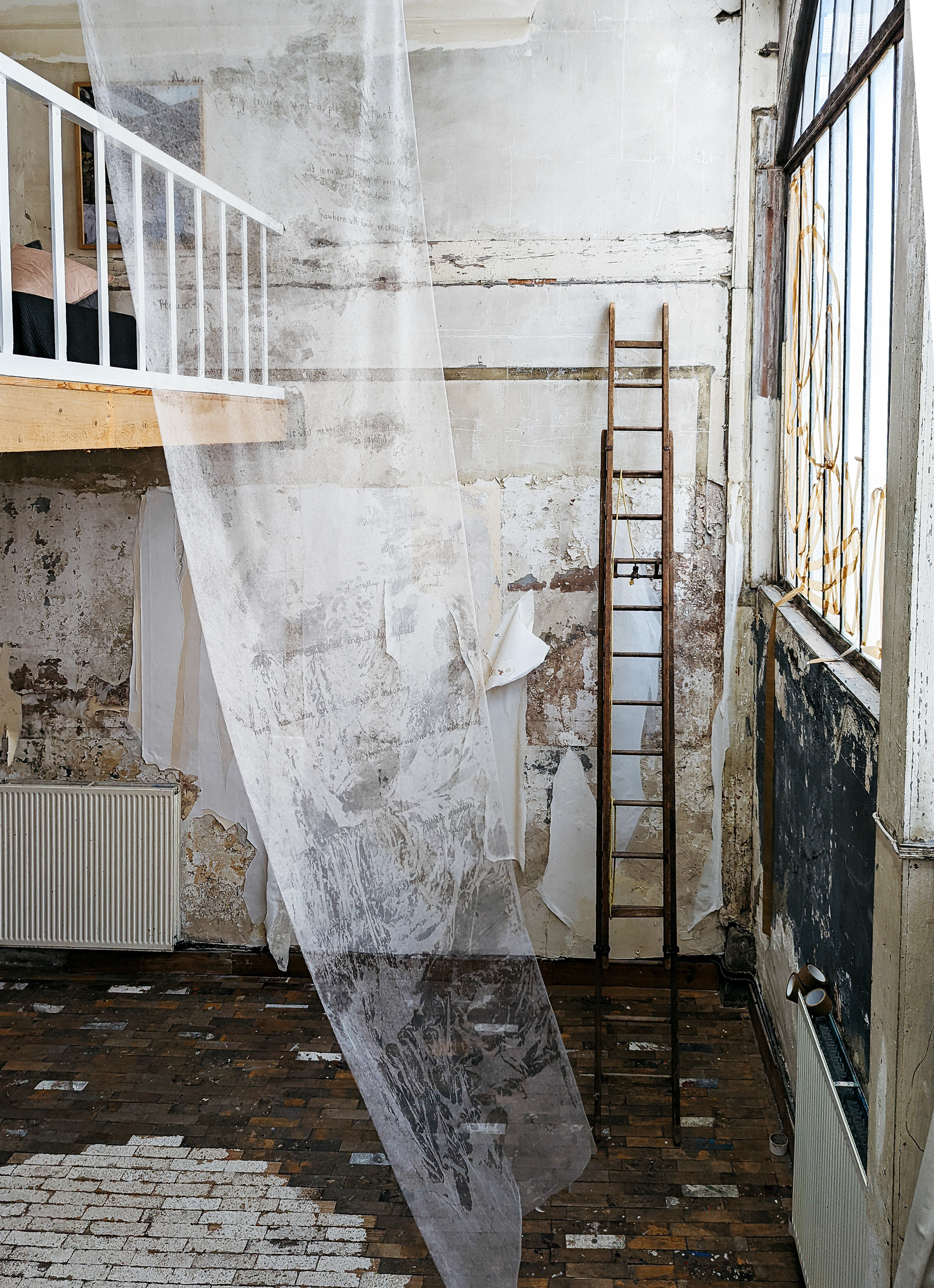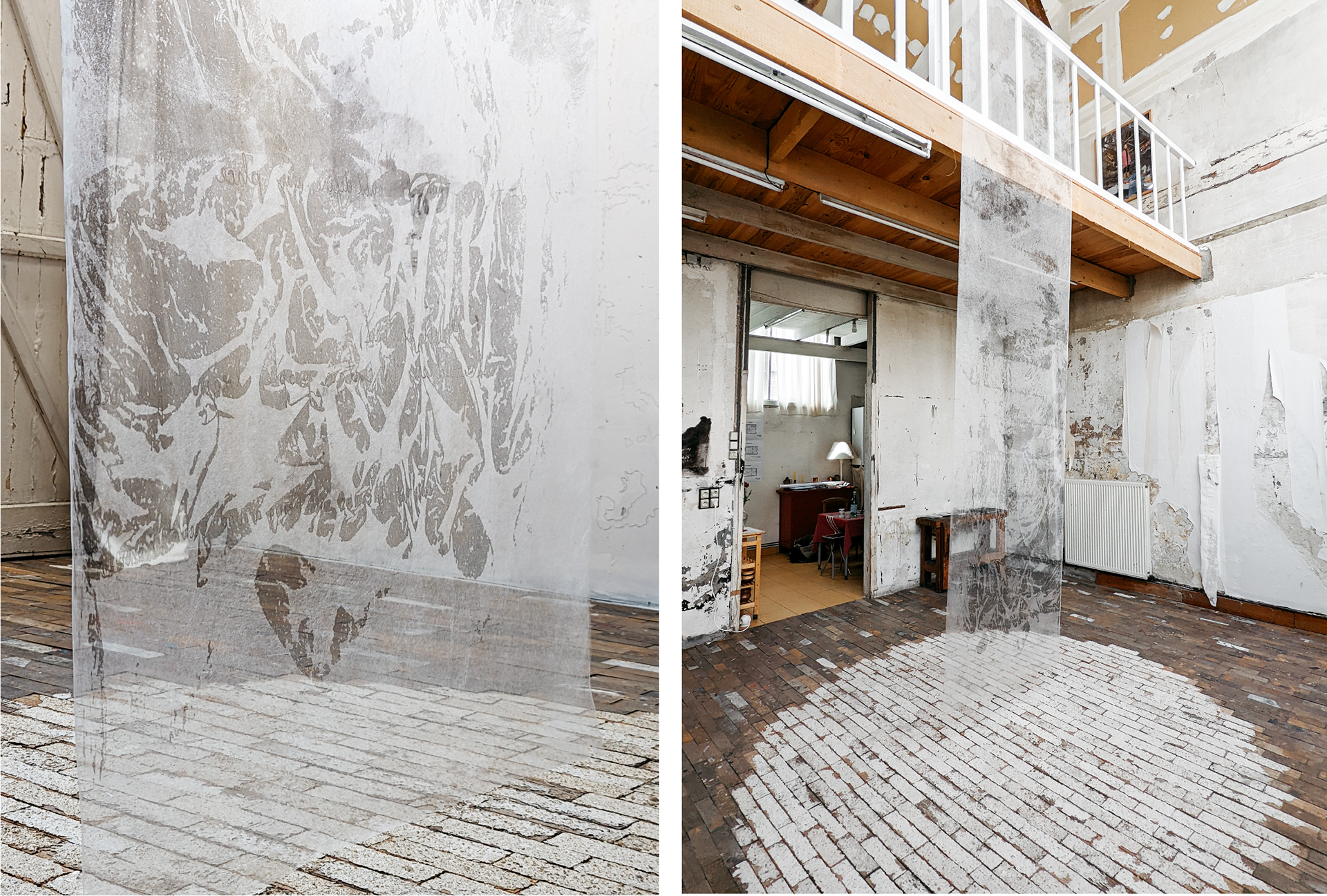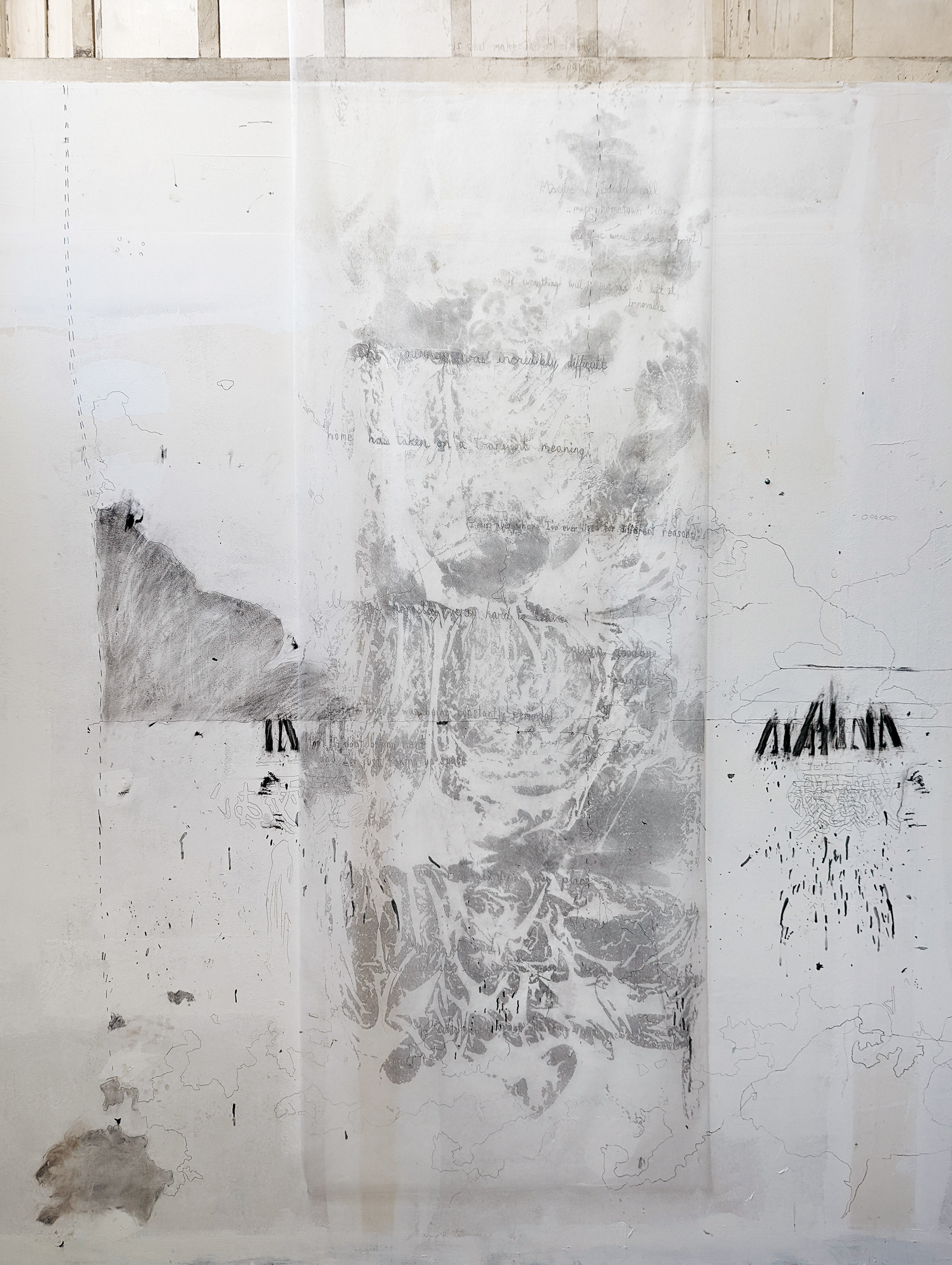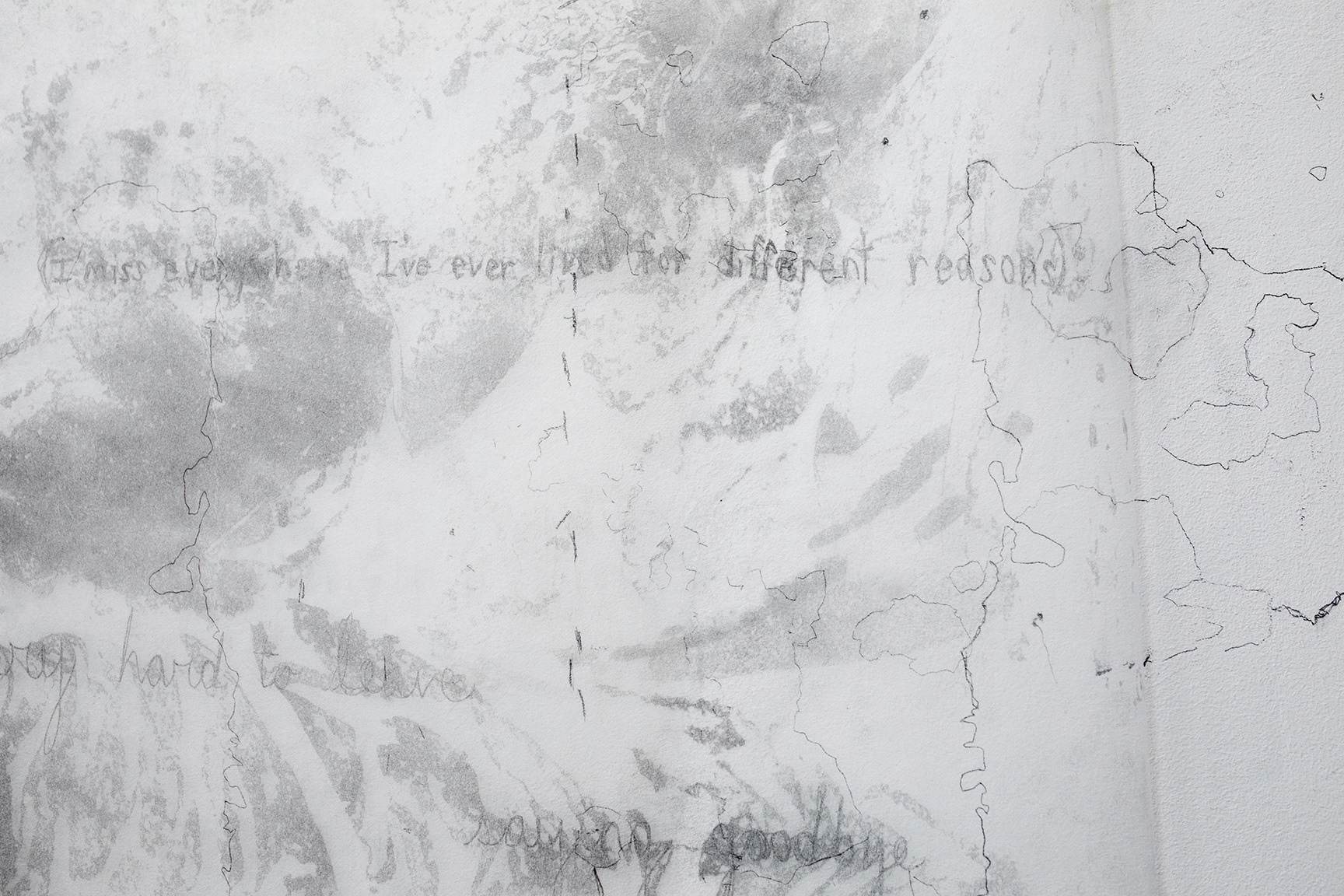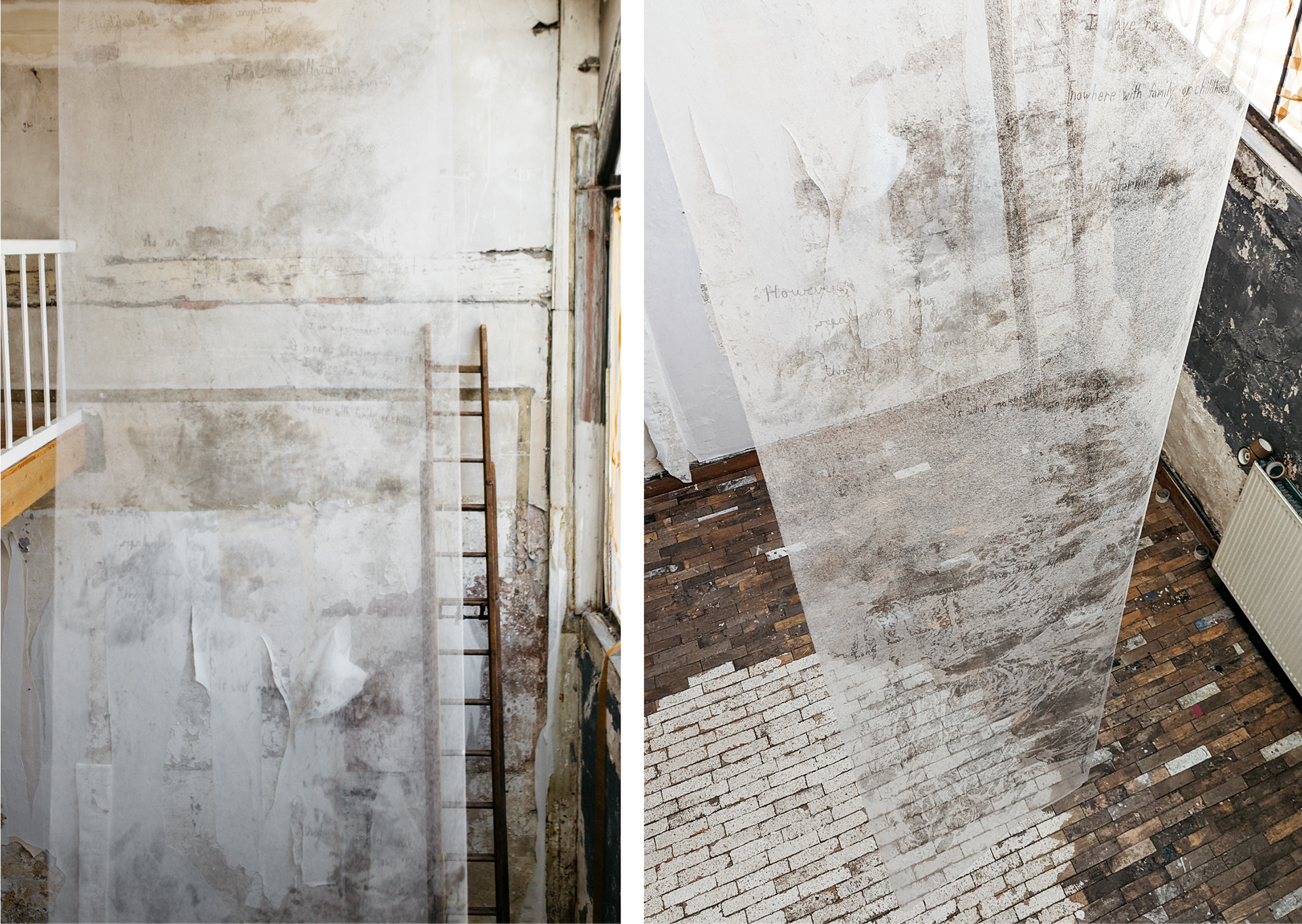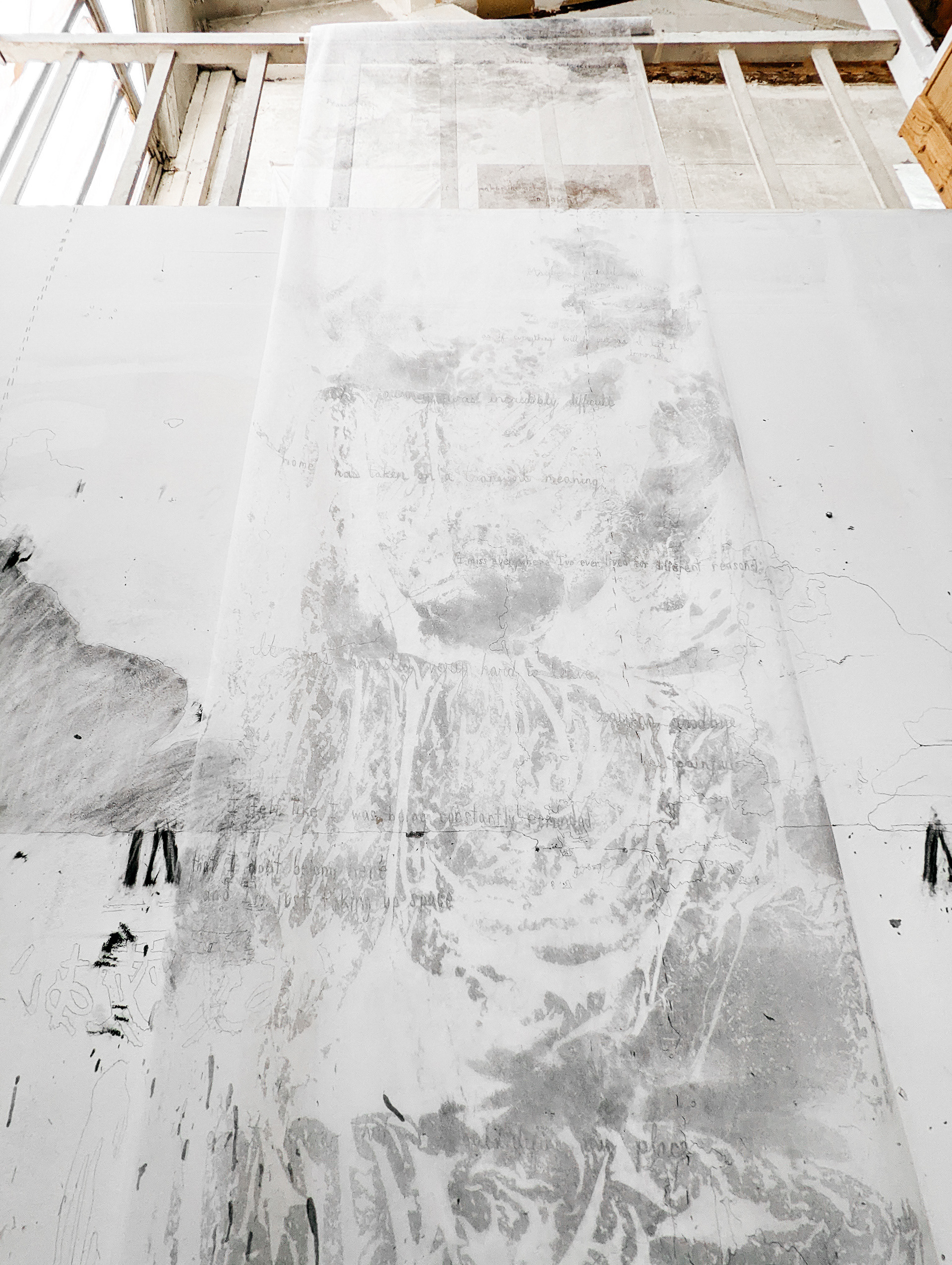MURMURATIONS (2022)
monotype and graphite on Japanese tengujo scroll, 500 cm x 100 cm
monotype and graphite on Japanese tengujo scroll, 500 cm x 100 cm
EN / FR
Monotyped using oil-based ink on ultra-thin 3.5g Japanese tengujo paper, these layered drawings and words are based on interviews I conducted with women who have undergone the process of relocation. Central to this body of work is the recognition of migration as a complex interplay of identities, cultures, and landscapes, and an investigation of the relationship between geography and belonging through the lens of gender politics.
Repositioning the conversation away from a male-dominated point of view and toward the lived experiences of female-identifying people, this visual conversation serves as a call to community, a reflection on the notion of ‘home,’ and a tribute to the pain inherent in the difficulties of displacement..
Monotyped using oil-based ink on ultra-thin 3.5g Japanese tengujo paper, these layered drawings and words are based on interviews I conducted with women who have undergone the process of relocation. Central to this body of work is the recognition of migration as a complex interplay of identities, cultures, and landscapes, and an investigation of the relationship between geography and belonging through the lens of gender politics.
Repositioning the conversation away from a male-dominated point of view and toward the lived experiences of female-identifying people, this visual conversation serves as a call to community, a reflection on the notion of ‘home,’ and a tribute to the pain inherent in the difficulties of displacement..
